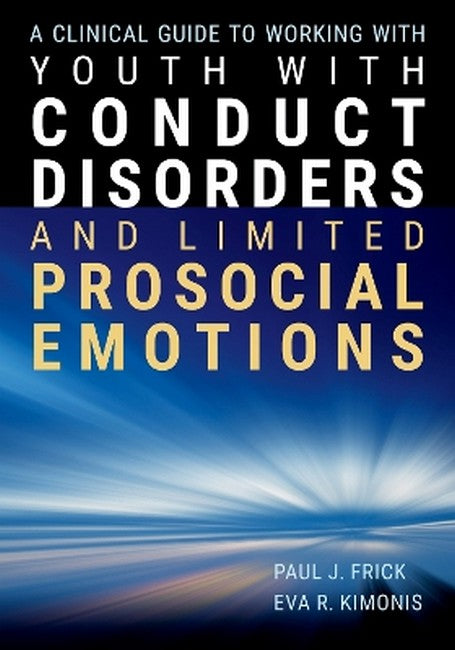Paul J. Frick, PhD, is a licensed psychologist and the Roy Crumpler memorial chair in Louisiana State University's Department of Psychology. His research on how children develop disruptive behaviors has been widely cited and has influenced how behavior problems are diagnosed worldwide. Dr. Frick has also developed several measures to aid in the assessment and diagnosis of children and adolescents with emotional and behavioral problems, which are used internationally in both research and practice and led him to receive the Bob Smith Excellence in Psychological Assessment Award from Division 53 of the American Psychological Association. Visit his website (https://www.lsu.edu/hss/psychology/faculty/clinical/frick.php). Eva R. Kimonis, MS, PhD, is a clinical psychologist and professor of psychology at the University of New South Wales where she directs the Parent-Child Research Clinic that provides state-of-the-art assessment and treatment for children with conduct problems. Dr. Kimonis has published widely on the development, assessment, and treatment of childhood conduct disorders and psychopathic traits. She received the Eric Taylor Translational Research Into Practice Award from the Association for Child and Adolescent Mental Health and a prestigious Fulbright Award from the J. William Fulbright Foreign Scholarship Board. Visit her website (https://www.conductproblems.com/) and on Facebook (https://www.facebook.com/parentchildresearchclinic) and X (@PCITunsw).
Request Academic Copy
Please copy the ISBN for submitting review copy form
Description
Dedications An Introduction to Assessing and Treating Children and Adolescents With Disruptive Behavior Disorders Who Lack Empathy and Guilt Part I. Overview of the Limited Prosocial Emotions Specifier and Its Significance Chapter 1. An Overview of Research on Diagnosing Limited Prosocial Emotions in Children and Adolescents Chapter 2. Clinically Important Differences Between Children with Limited Prosocial Emotions and Other Children with Conduct Problems Chapter 3. Distinct Emotional, Cognitive, and Social Characteristics of Children and Adolescents With Limited Prosocial Emotions Part II. Clinical Assessment and Diagnosis of Children and Adolescents With Limited Prosocial Emotions Chapter 4. General Considerations in the Assessment of Children and Adolescents With Limited Prosocial Emotions Chapter 5. Using the Inventory of Callous-Unemotional Traits in Clinical Assessments of the Limited Prosocial Emotions Specifier Chapter 6. Using the Clinical Assessment of Prosocial Emotions (CAPE) in Clinical Assessments of the Limited Prosocial Emotions Specifier Part III. Treating Children and Adolescents With Limited Prosocial Emotions Chapter 7. An Overview of Treatments That Work for Children and Adolescents With Limited Prosocial Emotions Chapter 8. Parent-Child Interaction Therapy for Callous-Unemotional Traits (PCIT-CU) Chapter 9. Illustrative Clinical Case Study Involving Parent-Child Interaction Therapy for Callous-Unemotional Traits (PCIT-CU) Chapter 10. Expanding the Reach of Treatments for Children and Adolescents with Limited Prosocial Emotions Part VI. Future Directions for Research and Practice Chapter 11. A Roadmap for the Future of Assessing and Treating Children and Adolescents With Limited Prosocial Emotions Appendix A. QR Codes for Accessing Various Assessment Tools, Treatment Manuals, and References Index About the Authors

